This post contains affiliate links for products we love. Fusion Craftiness earns a small commission on these links at no cost to you.
What is Dashi?
Dashi is a simple Japanese style broth or soup base. It only has a few ingredients, usually a combination of dried seaweed, dried fish and dried mushrooms. It is the base for many Japanese soups and other Asian soups too.
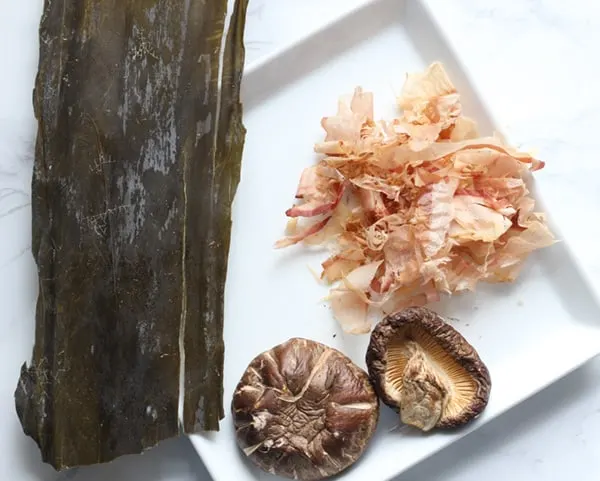
What makes this soup base special is that it is flavored with three different umami compounds. Inosinate from the bonito is enhanced from the glutamate in the seaweed. If you add a few shiitake mushrooms, guanylic acid rounds out the third umami compound.
Think of Dashi as a soup base rather than a broth. You would make your broth from this soup base to take advantage of all this umami. Umami for the uninitiated is the ‘fifth taste’ behind sweet, salt, sour, bitter.
Try any combination of these three umami ingredients to make your favorite soup base.
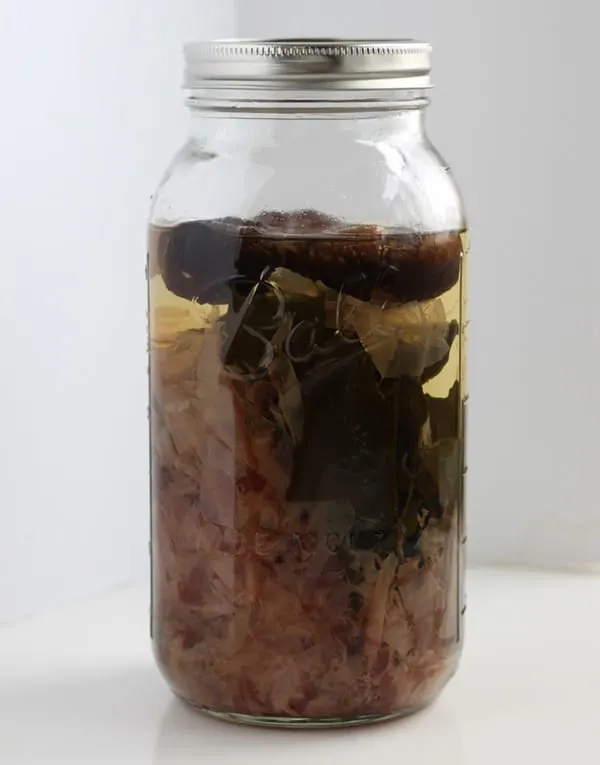
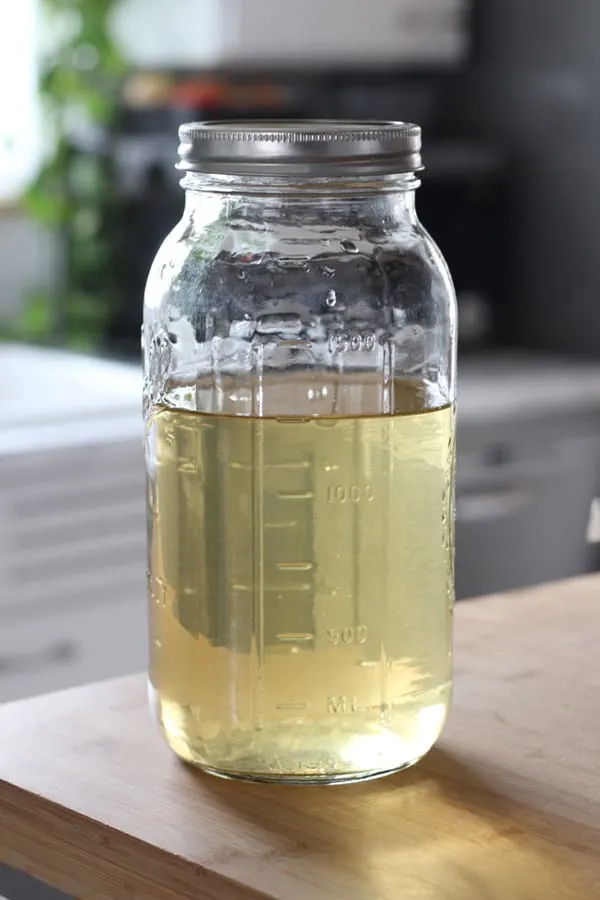
Types of Dashi
There is more than one way to develop a Dashi. Try a simple variation with a single ingredient or try a combination. Dashi can be a vegans best culinary friend in the kitchen, giving vegan dishes extra depth of flavor without using meat.
Leave a comment if you try any of these combinations and let us know how it turns out.
- Kombu Dashi – Dried kelp (Kombu) soaked in water. This is one type of vegan Dashi.
- Shitake Dashi – Dried shitake mushrooms soaked in water. Another vegan Dashi.
- Niboshi Dashi – Dried baby sardines (Niboshi) soaked in water.
- Katsuo Dashi – Dried, fermented and smoked bonito flakes (Katsuobushi) soaked in water. Bonito flakes are made from Skipjack tuna, a simple bonito broth that is full of umami.
- Kakejiro – A mix of Dashi with soy sauce and mirin (a type of sweet cooking wine). This makes a common soup base for udon and somen noodles.
- Vegan Dashi – Kombu and kelp soaked in water.
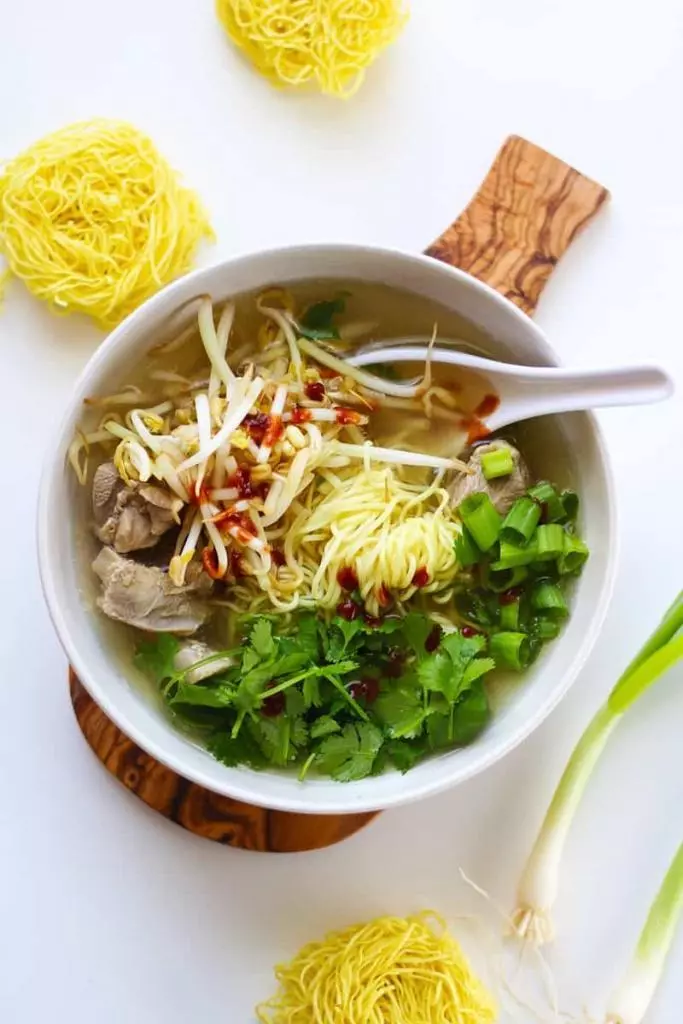
Dashi Substitutes
Hondashi – A dried bonito flake product. Just add a tsp per cup of water. It’s basically instant Dashi.
Dashi Powder – Dried bonito and kelp powder. Another easy way to make a Dashi. Some come in tea bag-like packages for convenience.
Low sodium chicken broth – You can cheat with pre-made broth for convenience. Be sure to use low sodium if you are going to be adding anything salty like miso paste or soy sauce.
Low sodium vegetable broth – Another good substitute, especially if it is made with shiitake mushrooms. If not, try adding some to pre-made vegetable broth to get some of that umami rich-ness.
Tips for Making Dashi
Kelp can get bitter or slimy when boiled. When making Dashi with kelp, either soak for several hours in the fridge or bring a pot of water and kelp to just barely a simmer, remove kelp and continue with your recipe.
Using a fine mesh strainer helps make a clearer broth.
What Can I Make With Dashi?
This is where you, the home cook, has a blank slate. You can make whatever you want.
If it’s just a ‘warm up my insides’ mission, I heat Dashi, add miso paste and some noodles.
If I need to make a meal out of it, I add protein like chicken, eggs, ham and maybe some veggies like scallions, cabbage or carrots.
Sweet and Sour Soup – An easy classic Chinese recipe. Just substitute Dashi for the vegetable broth or try a half and half combo. Adjust the salt as desired.
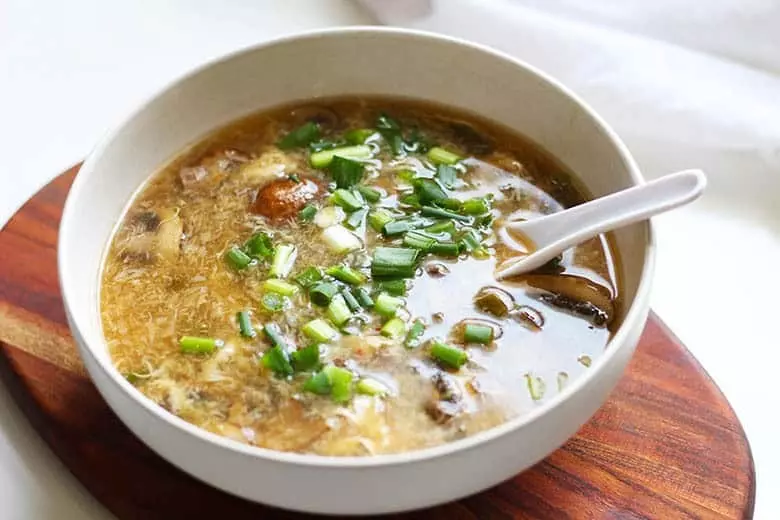
Miso Soup – Add 1/2 tablespoon of miso paste for every cup of Dashi to make miso soup. First heat Dashi to simmer, then in a small bowl mix a little hot Dashi to the miso paste to dissolve first. Then add dissolved miso paste to Dashi and remove from heat. Add silken tofu cut into cubes and scallions.
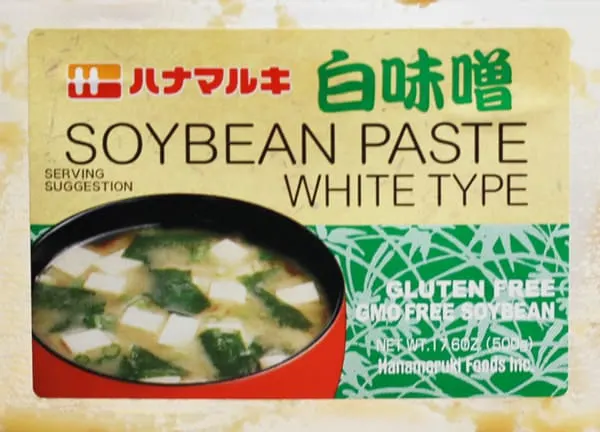
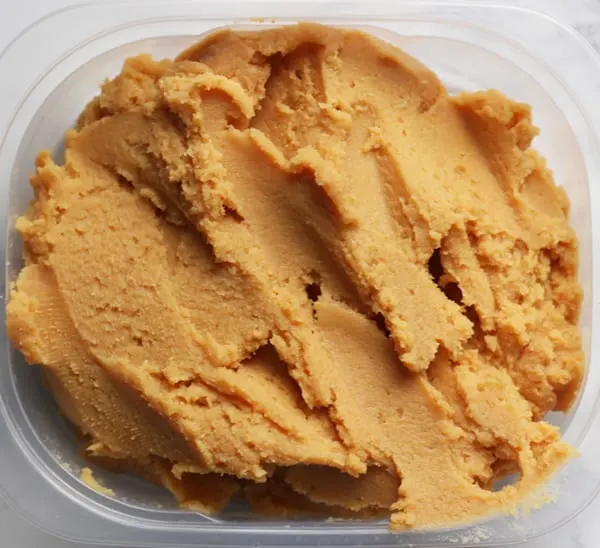
Chinese Vegetable Soup – Add one part Dashi to two parts vegetable broth. Add Bok Choy, baby corn, water chestnuts, scallions, snow peas, broccoli and tofu. Garnish with soy sauce and chili oil.
Bok Choy Soup – Bring Dashi to a simmer and add noodles of choice. Cook noodles until almost done, add bok choy. When noodles are done, remove from heat and add miso paste as described above for miso soup. Garnish with soy sauce and sesame oil as desired.
Kimchi Udon Noodle Soup – This is one of my favorite soups. Simple substitute Dashi for the vegetable broth.
Japanese Clear Soup – Add one part Dashi, one part beef broth and two parts vegetable broth to a simmer. Add thinly sliced mushroom and cook until soft. Serve with sliced scallions and soy sauce as a garnish.
Korean Soup – To Dashi add Gochujang (Korean chili paste), Doenjang (Korean fermented soybean paste), Bok Choy, tofu, garlic and fish sauce.
Did you make this recipe? Don’t forget to rate the recipe and comment below! Take a picture and tag us @FusionCraftiness #FusionCraftiness on Instagram for a chance to be featured in our Insta Stories:)
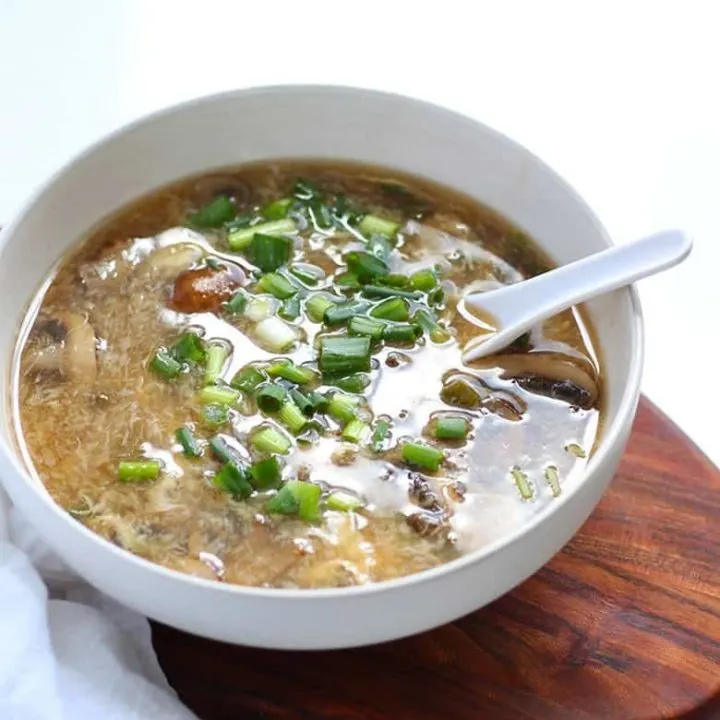
Dashi Recipe
An overnight method for making a simple dashi. This traditional Japanese base is perfect for Asian soup recipes.
Ingredients
- 1/2 oz dried kelp (Kombu)
- 2 cups of bonito flakes
- 3 dried shitake mushrooms
- 8 cups water
Instructions
- In a one gallon mason jar or other large vessel with a lid, add the kelp, bonito flakes and mushrooms. Cover and refridgerate overnight.
- The next day, strain through a fine mesh strainer and discard the solids.
- Use in your soup recipes as a soup base.
Notes
This is a great base for Asian soups. Add miso or doenjang paste, noodles, vegetables, tofu, kimchi or eggs. Garnish with scallions, soy sauce, sesame oil. Be creative.
Recommended Products
As an Amazon Associate and member of other affiliate programs, I earn from qualifying purchases.
-
![Awase Dashi Powder with No MSG (Bonito and Kelp Soup Stock) [English instructions on the back] 1.48 oz (6 gram x 7 packets)](https://m.media-amazon.com/images/I/51cr0fwI3vL._SL500_.jpg) Awase Dashi Powder with No MSG (Bonito and Kelp Soup Stock) [English instructions on the back] 1.48 oz (6 gram x 7 packets)
Awase Dashi Powder with No MSG (Bonito and Kelp Soup Stock) [English instructions on the back] 1.48 oz (6 gram x 7 packets) -
 Japanese Hon Dashi Bonito Fish Soup Stock - 2.1 oz x 2 bottles
Japanese Hon Dashi Bonito Fish Soup Stock - 2.1 oz x 2 bottles -
 ONETANG Shiitake Mushroom Slices 227g, Dried Mushroom Slices, No Fumigation Sulfur 8 Oz
ONETANG Shiitake Mushroom Slices 227g, Dried Mushroom Slices, No Fumigation Sulfur 8 Oz -
 Kaneso Tokuyou Hanakatsuo , Dried Bonito Flakes 3.52 Ounce (2 Bags)
Kaneso Tokuyou Hanakatsuo , Dried Bonito Flakes 3.52 Ounce (2 Bags) -
 Wel-pac Dashi Kombu Dried Seaweed (Pack 1)
Wel-pac Dashi Kombu Dried Seaweed (Pack 1) -
 9" Kitchen Fine Mesh Strainer with Sturdy Handle and Wider Hook - Perfect for Quinoa
9" Kitchen Fine Mesh Strainer with Sturdy Handle and Wider Hook - Perfect for Quinoa
Nutrition Information:
Yield: 4 Serving Size: 1Amount Per Serving: Calories: 19Total Fat: 0gSaturated Fat: 0gTrans Fat: 0gUnsaturated Fat: 0gCholesterol: 8mgSodium: 398mgCarbohydrates: 1gFiber: 0gSugar: 0gProtein: 4g

Bianca
Friday 27th of December 2019
I always wondered if we could substitute our favorite broth for dashi. This was very helpful, especially the lists of different dashi. Thanks!